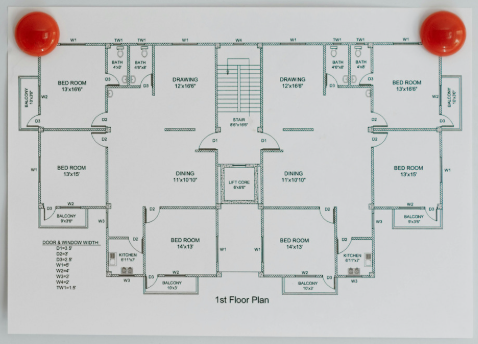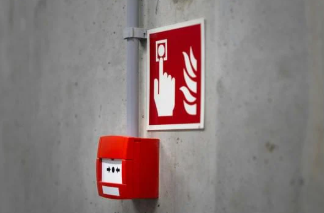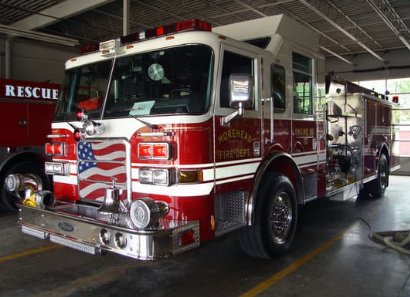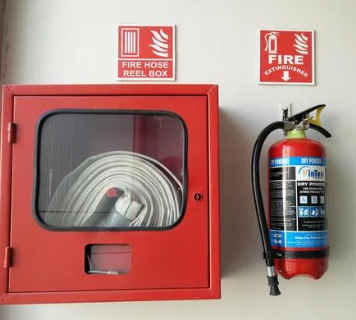Fire Safety Plans
Plan. Prepare. Protect. Your Safety Starts With A Fire-Smart Plan
Creating Safer Environments Through Fire Planning
Designed for Compliance. Engineered for Safety.
A Fire Safety Plan is essential for protecting lives, property, and the environment. It is designed to prepare for emergencies and reduce the risk of fire by outlining effective fire prevention practices. Such practices include; ensuring proper use and maintenance of the building’s fire safety systems, defining the responsibilities of building owners and supervisory staff during a fire emergency, and providing occupants with essential instructions on what to do in the event of a fire. A Fire Safety Plan ensures quick and effective responses when emergencies occur.
A Fire Safety Plan also serves as a valuable resource for the local Fire Department by offering a detailed overview of the building’s design, layout, usage, fire protection systems, and any associated hazards. This information supports the development of effective firefighting strategies tailored to the specific characteristics of the building.
What is a Fire Safety Plan?
A Fire Safety Plan (FSP) is a comprehensive document required by the building and fire codes which outlines the following items;
Purpose and Scope,
Vital building information and building systems controls,
Building fire protection and life safety systems,
Designated role and Responsibilities of building occupants and staff,
Fire emergency procedures & evacuations diagrams,
Maintenance and inspection of fire protection systems,
Fire department access and site details,
Control of fire hazards in the building,
Emergency contact list & evacuation reporting list,
Hot works procedures,
Fire drills procedures, and
Fire watch procedures.
Staff Training & Drills Guidance
Evacuation Diagrams
Fire Protection Equipment Locations
Emergency Contact Directory
Why Fire Safety Plans Matter
1. Life Safety
Protecting occupants by ensuring fast, organized evacuation.
2. Property Protection
Helps minimize fire damage to buildings, assets, and equipment by organised and practised responce.
Ensures fire protection systems (e.g. sprinklers, extinguishers) are in place and functioning.
Reduces risk of total loss and speeds up recovery after a fire.
3. Support for Firefighters
Provides firefighters with key info (e.g. building layout, hazardous materials, fire alarm zones) for faster, safer response.
Improves coordination between on-site staff and emergency services.
4. Legal Compliance
Required under the National Fire Code of Canada and provincial/territorial fire codes.
Non-compliance can lead to fines, insurance issues, building closure or legal liability.
5. Risk Reduction
Identifies fire hazards (e.g. poor storage of combustibles, blocked exits).
Establishes routines for maintenance and inspection.
Reduces the chance of a fire starting in the first place by administrative measures.
6. Staff Preparedness and Accountability
Assigns clear roles (e.g. fire wardens, floor captains).
Ensures that everyone knows:
What to do
Where to go
Who to help
7. Insurance & Liability
Insurers may require a fire safety plan as a condition of coverage.
A well-documented and followed plan can:
Lower premiums
Protect owners/managers from liability
Be used in court to show due diligence
Who needs a Fire Safety Plan?
You may be required to have a Fire Safety Plan if your building includes:
More then 3 residential units,
An assembly occupancy (restaurants, churches, schools),
Underground or above-ground parking,
Hazardous materials or industrial equipment,
Commercial kitchens,
Office space over a certain square footage,
Public or high-traffic areas,
Buildings with fire alarms,
Industrial occupancies,
Indoor and outdoor storage, and
Care, treatment or detection occupancies, demolition and construction sites, laboratories, wood working process apartment buildings/condos commercial office, warehouses, schools and daycares, retail stores and malls, and hotels.
Don’t leave compliance to chance - check with your local fire department or contact us for guidance
What’s included in a Fire Safety Plan
Our Fire Safety Plan Services Include:
Site assessments,
Custom plan development,
Site audits and fire code reviews,
Fire department submissions & approvals,
Training & implementation,
Emergency procedures and life safety diagrams,
Annual plan updates and maintenance,
Liaising with the Authorities Having Jurisdiction (AHJ),
Fire drill coordination,
Staff training and education,
Fire watch procedures,
Assistance with insurance documentation, and
Gap analysis against national and provincial fire code requirements.
We ensure all Fire Safety Plans meet or exceed requirements set by:
Provincial/ Territorial Fire Codes,
Provincial/ Territorial Building Codes,
Local Fire Department, and
Municipal Fire Bylaws
Frequently Asked Questions (FAQs)
How often should a plan be updated?
Fire Safety Plans should be reviewed at least once a year as well as whenever building layouts, fire protection systems, or occupancy classifications change.
What happens if my building does not have a Fire Safety Plan?
Failure to maintain a Fire Safety Plan can result in fines, delays in occupancy approval, or liability risks if an incident occurs.
Can I use the same Fire Safety Plan for multiple years?
Yes, but only if the building layout, systems, and regulations remain the same. Plans must be updated whenever there are changes
Who needs to be trained on the Fire Safety Plan?
All building staff, including managers, supervisors, security, and designated fire wardens. Residents should also be familiar with evacuation procedures.







